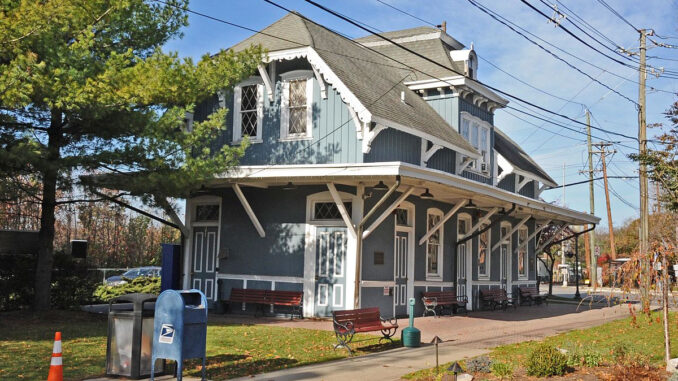
HILLSDALE, N.J.—The borough should create a revitalization plan “vision” for its downtown to help with securing grants and to guide commercial development there, a planning official said at the May 10 council meeting.
Following a brief presentation and details on steps necessary to start downtown rehabilitation, Mayor John Ruocco said the council must decide how to proceed with any such efforts.
Francis Reiner, an architect with DMR Architects, offered details on a possible downtown revitalization strategy that could help spark new commercial development.
Reiner also helped the borough draft its recent Patterson Street redevelopment plan, a source of controversy due to its “density bonuses.”
The bonuses offer a possible increase in housing density to a developer in exchange for a community benefit such as open space or a community center. No developer has come forward since the plan’s passage early this year, officials said.
Reiner told the council that downtown revitalization planning includes eight steps from commencing a study to designate the downtown as an area for rehabilitation to formally adopting a rehabilitation plan.
Other steps include beginning a rehabilitation study, updating the Master Plan, engaging the community in a “visioning process” to find out what they want in their downtown, drafting a rehabilitation plan, soliciting public input on the draft plan, and engaging outside resources such as New Jersey’s Main Streets program to assist in programming and management of a revitalized downtown district.
Reiner said that his firm could help with the process and engaging public input via surveys, workshops and reaching out to community “key stakeholders” to determine what a revitalized downtown should look like.
Reiner said the rehabilitation plan can identify downtown buildings that the borough wants to improve or restore, and provide future design guidelines for development or rehabilitation in the area.
He said it was unlikely much rehabilitation would occur downtown without such a plan to spur and guide investment.
Asked by councilman Anthony DeRosa what impetus businesses have to make structural changes and improvements on their own, Reiner said little incentive is currently there and said it was “unlikely” to see any downtown enhancement without a rehabilitation plan.
Moreover, he said, a rehabilitation plan offers possible grants and state assistance through Main Streets New Jersey to assist with community upgrades. These may include building facades and other structural upgrades, including benches and planters.
Reiner also suggested creation of a business improvement district to assist businesses with improvements and attracting customers may work hand in hand with other state incentive programs or community block grants to revitalize a struggling business district.
Councilwoman Janetta Trochimiuk wondered how a revitalization process would be sustained and Reiner said a local committee could move the process along. “You really need to move all the way through this process to get all the benefits,” Reiner said.
Reiner said most successful downtowns do not permit residential development but instead site mixed-use developments that offer retail on the ground floor and housing above the retail.
He said most development professionals he consults said that mixed-use development has staying power and will remain popular in the future.
Among permitted uses downtown are professional offices, retail, banks, restaurants, lodges, medical and dental clinics, commercial and business schools, and parks and playgrounds.
Asked by Ruocco whether a rehabilitation plan should include affordable housing, Reiner said if the town has a settlement plan that requires a set-aside of affordable units in [five or more] multifamily dwellings, then it is included.
It’s all “part of the conversation and process” to create a community rehabilitation plan, he said.
